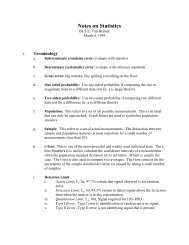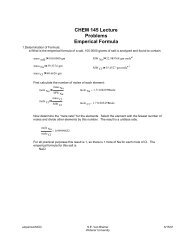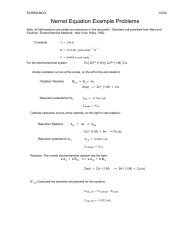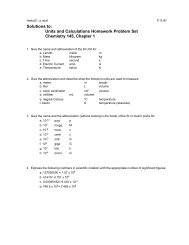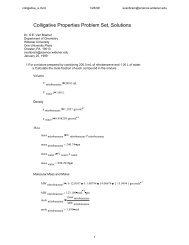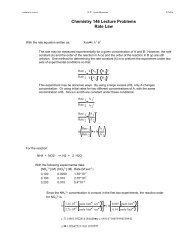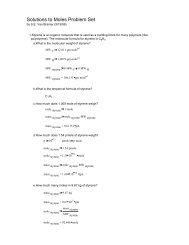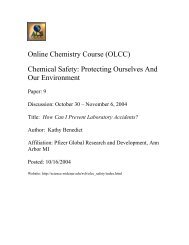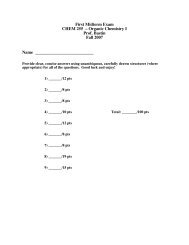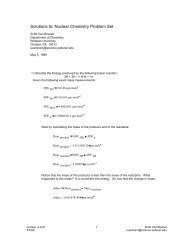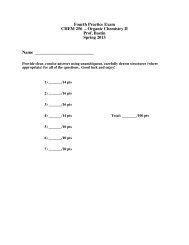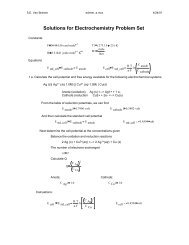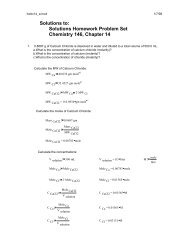Ksp Problem Set - Widener University
Ksp Problem Set - Widener University
Ksp Problem Set - Widener University
Create successful ePaper yourself
Turn your PDF publications into a flip-book with our unique Google optimized e-Paper software.
Assuming X is small this simplifies to:<br />
K sp_AgCl =<br />
X :=<br />
( K sp_AgCl )<br />
C Cl<br />
X⋅C Cl<br />
X −1.888<br />
× 10 − 7 − 1<br />
=<br />
mole⋅liter<br />
C Cl −9.535<br />
× 10 − 4 − 1<br />
=<br />
molliter<br />
So the assumption was fine and now we can go on.<br />
From this we can give the concentration of all the ions in solution:<br />
C Ag := X<br />
C Ag −1.888<br />
× 10 − 7 − 1<br />
=<br />
molliter<br />
C Cl −9.535<br />
× 10 − 4 − 1<br />
=<br />
molliter<br />
75⋅mL<br />
C NO3 := C AgNO3 ⋅<br />
1075⋅mL<br />
1000⋅mL<br />
C Li := C LiCl ⋅<br />
1075⋅mL<br />
C NO3 1.047 10 − 3 − 1<br />
= × molliter<br />
C Li 9.302 × 10 − 5 − 1<br />
=<br />
molliter<br />
d.100 L of 0.50 M calcium chloride is mixed with 5000.0 L of 0.10 M potassium fluoride.<br />
Potassium Fluoride is a salt, it dissociates completely according to<br />
KF --> K1+ + F1-<br />
− 1<br />
C KF := 0.1⋅mole⋅liter<br />
5000⋅liter<br />
C F_initial := C KF ⋅<br />
5100⋅liter<br />
− 1<br />
C F_initial = 0.098 mole⋅liter<br />
Calcium Chloride is a salt, it dissociates completely according to<br />
CaCl2 --> Ca2+ + 2 Cl1-<br />
− 1<br />
C CaCl2 := 0.015⋅mole⋅liter<br />
C Ca_initial :=<br />
100⋅liter<br />
C CaCl2<br />
5100⋅liter<br />
C Ca_initial 2.941 × 10 − 4 − 1<br />
=<br />
mole⋅liter<br />
ksp_a.mcd<br />
3/25/2004<br />
14 S.E. Van Bramer<br />
svanbram@science.widener.edu



